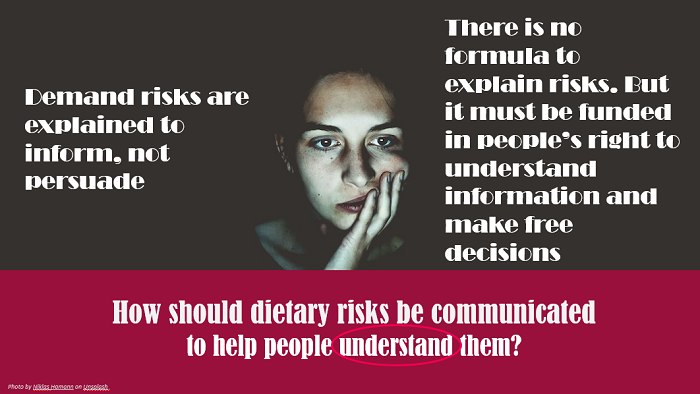
The essence of risk communication is to provide citizens with a clear understanding of the benefits, harms, trade-offs and uncertainties of given behaviour. Risk communication should be based on up-to-date knowledge, honesty, empathy and respect.
A number of scientific communications have highlighted the steps to follow to achieve ethical risk communication taking examples of health issues related to food and drinks which are currently debated at EU level.
Consumers are confronted daily with conflicting media messages about what to eat or drink (eg coffee, junk food, red meat, alcohol, tuna sandwich or broccoli!) showing the complexities of risk communication regarding this category of consumer goods.
It is crucial to discern the purpose of risk communication—whether to change behaviour, beliefs, or merely provide information—emphasizing the differences between persuasion and information. Both objectives are acceptable, but they need to be spelt out by the sender of the message.
It is important to understand risk as more than just numbers, acknowledging its subjective nature influenced by individual perceptions and feelings.
The overarching goal is to promote clear, unbiased communication that fosters true comprehension of risks and benefits, ultimately empowering individuals to make informed decisions about their health. In this respect, the example of the health warning label in Ireland directly linking alcohol consumption to liver disease and cancer without offering a nuanced understanding of the risks was taken as an example not to be followed.
Scientific publications have seven rules to enhance risk communication to a level that could be understood by the target group to make an informed choice (away from fear tactics and persuasion).
The overarching message is to prioritize informative communication over persuasion, respecting individuals' right to understand information and make informed choices regarding their health. No one can object to the importance of clarity, transparency, and a nuanced approach to risk communication.